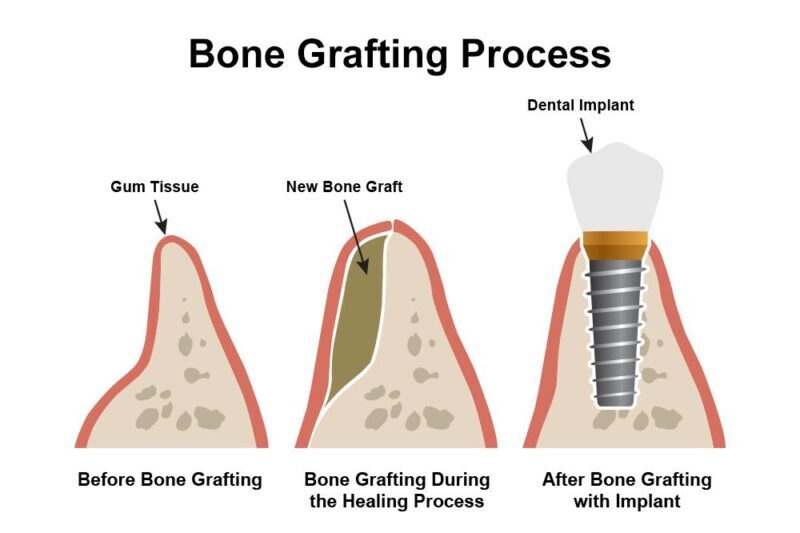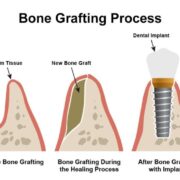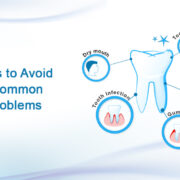Are you curious about how long it takes to heal from a bone graft? You’re not by yourself. In this post, we’ll examine the important query, “How long does a bone graft take to heal?”. Knowing how to recuperate after this operation is essential, regardless of whether you’ve had it done or are thinking about doing it. Bone grafts are often used in a variety of medical settings, including orthopaedic and dental operations. The type of graft, where it is placed in the body, and the patient’s health are some of the variables that may affect how long the healing process takes. Don’t worry, though; we’ll simplify the key points in a conversational and understandable way.
Understanding Bone Grafts
Not all bone grafting procedures are the same. Exploring the field of bone grafts is akin to discovering a vast array of choices that address a variety of requirements. Anyone navigating the world of dental operations and oral health must have a solid understanding of the many varieties and their uses.
Types of Bone Grafts
Autografts
These involve using a patient’s bone, often sourced from the hip, leg, or another part of the body. Autografts are hailed for their compatibility and effectiveness since they are the patient’s own tissue. The risk of rejection is minimal, and they provide a natural scaffold for bone regeneration.
Allografts
Allografts utilise donor bone, typically harvested from cadavers or living donors. These grafts offer an alternative for patients who may not prefer or have suitable autograft donor sites. Rigorous testing ensures the safety of allografts, and their availability makes them a valuable option.
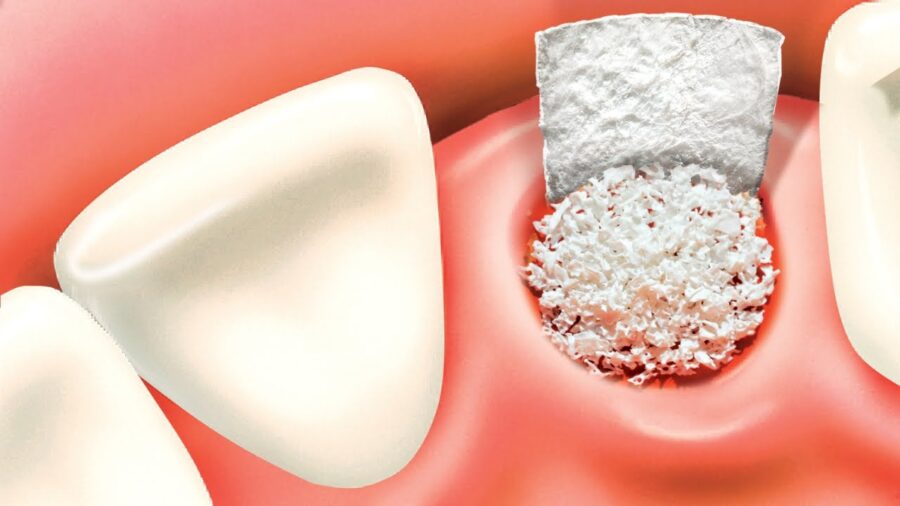
Xenografts
Xenografts involve using bone material from animals, commonly from bovine or porcine sources. While not as commonly used as autografts or allografts, xenografts serve as a synthetic scaffold that supports bone growth. They are processed to eliminate immunogenic components, reducing the risk of adverse reactions.
Synthetic Grafts
Synthetic grafts are man-made materials designed to mimic the properties of natural bone. These grafts offer versatility and eliminate the need for additional donor sites. Advances in technology have led to synthetic grafts that promote bone regeneration effectively, providing a reliable alternative.
Indications for Bone Grafts in Dentistry
Dental Implants
When natural bone density is insufficient, bone grafts become a crucial step in preparing the site for dental implant placement. A well-integrated bone graft ensures a stable foundation for the implant, increasing the chances of long-term success and durability.
Ridge Augmentation
Ridge augmentation involves enhancing the shape and size of the jawbone to address deformities or deficiencies. This procedure is commonly employed to improve the aesthetics of the smile and create an ideal foundation for various dental restorations.
Sinus Lift Procedures
In cases where the sinuses encroach upon the upper jaw, sinus lift procedures may be necessary before implant placement. Elevating the sinus membrane and grafting bone material into the sinus space enable the creation of a stable environment for implants in the upper jaw.
Healing Time | How long does a Bone Graft take
Starting the healing process following a bone graft is an exciting adventure with discrete stages that add to the procedure’s ultimate success. People may confidently manage the rehabilitation process if they are aware of what occurs at each step.
Initial Days Post-Surgery
Immediate Post-Operative Care
In the crucial hours following surgery, diligent care is paramount. Adhering to post-operative instructions, such as prescribed medications, rest, and avoiding certain activities, sets the stage for a smooth recovery. Proper immediate care minimizes the risk of complications and promotes the initial healing phase.
Managing Discomfort and Swelling
Discomfort and swelling are natural responses to surgery. Employing prescribed pain management strategies, using ice packs, and maintaining an elevated head position aid in alleviating these post-operative effects. Effectively managing discomfort enhances the overall experience and sets the foundation for subsequent phases of healing.
First Week
Blood Clot Formation
The initial week is characterized by the formation of a blood clot at the graft site. This clot serves as a protective barrier, preventing infection and initiating the healing cascade. A robust blood clot is the first line of defense, creating a conducive environment for subsequent healing processes.
Early Signs of Healing
Signs such as reduced swelling, diminished pain, and initial tissue repair become evident during the first week. Regular communication with your dentist is vital to monitor progress. Recognizing early signs of healing provides reassurance and ensures prompt intervention if any concerns arise.
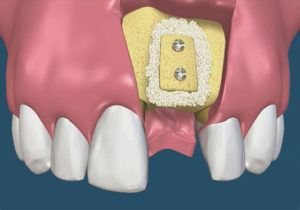
Weeks 2-4
Osteoblasts at Work
Weeks 2-4 witness a surge in cellular activity, with osteoblasts taking center stage. These bone-building cells work diligently to create a scaffold for new bone formation. Osteoblast activity is pivotal for laying the groundwork for the consolidation phase, where the graft gains stability.
Monitoring Oral Hygiene
As cellular activity intensifies, maintaining optimal oral hygiene becomes crucial. Following prescribed oral care routines and avoiding activities that may disrupt the graft site are essential. Proactive oral hygiene practices safeguard against infections and promote a favorable environment for healing.
Month 1-3
X-ray Progression
Radiographic assessments, such as X-rays, are often performed to track the progression of bone maturation. These images provide insights into the graft’s integration with the existing bone. Regular X-ray evaluations guide dental professionals in assessing the success of the graft and adjusting treatment plans if necessary.
Dietary Considerations for Accelerated Healing
Nutrition plays a crucial role in bone health. Ensuring a diet rich in essential nutrients, including calcium and vitamin D, supports accelerated bone healing. Proper nutrition fuels the body’s regenerative processes, contributing to the maturation of new bone tissue.
Factors Influencing Healing Time
Age
Age is a significant determinant of healing time. Younger individuals generally exhibit faster healing rates due to heightened cellular activity and metabolic functions. Recognizing age-related variations helps set realistic expectations and allows for personalized care plans.
Overall Health
The overall health of a patient is a critical factor. Chronic conditions, nutritional deficiencies, or compromised immune systems may extend healing time. Optimal overall health creates a conducive environment for efficient healing and reduces the risk of complications.
Lifestyle Choices
Lifestyle choices, including smoking and excessive alcohol consumption, can negatively impact healing. Smoking, in particular, hinders blood flow and reduces the body’s ability to regenerate tissue. Encouraging healthy lifestyle choices contributes to an environment conducive to swift and successful healing.
Comparing Healing Times for Different Graft Types
The type of graft used significantly influences healing time. Autografts, being the patient’s own tissue, often exhibit faster integration compared to allografts or xenografts. Tailoring the choice of graft material to individual needs and considering potential variations in healing times allows for more accurate expectations.
Impact of Graft Size on Recovery
The size of the graft plays a pivotal role. Larger grafts may necessitate more extended healing periods as they require increased cellular activity and tissue integration. Understanding the relationship between graft size and recovery time aids in planning post-operative care and managing patient expectations.
Conclusion
In summary, the journey of “How Long Does A Bone Graft Take To Heal?” reveals a tapestry of stages, ranging from the growth of new bone to immediate post-operative care. The significance of patient-related variables and graft qualities in determining healing time is emphasized by Dr. Chirag Chamria. Important lessons include the importance of size, graft material, lifestyle choices, general health, and age. Dr. Chamria advises patients to follow post-operative instructions, work in tandem with their dentist, and enjoy the healing process in order to achieve a more robust and energized version of themselves as we negotiate this challenging route. Trust the process, educate yourself, and watch as your body’s amazing regeneration abilities come to life.

